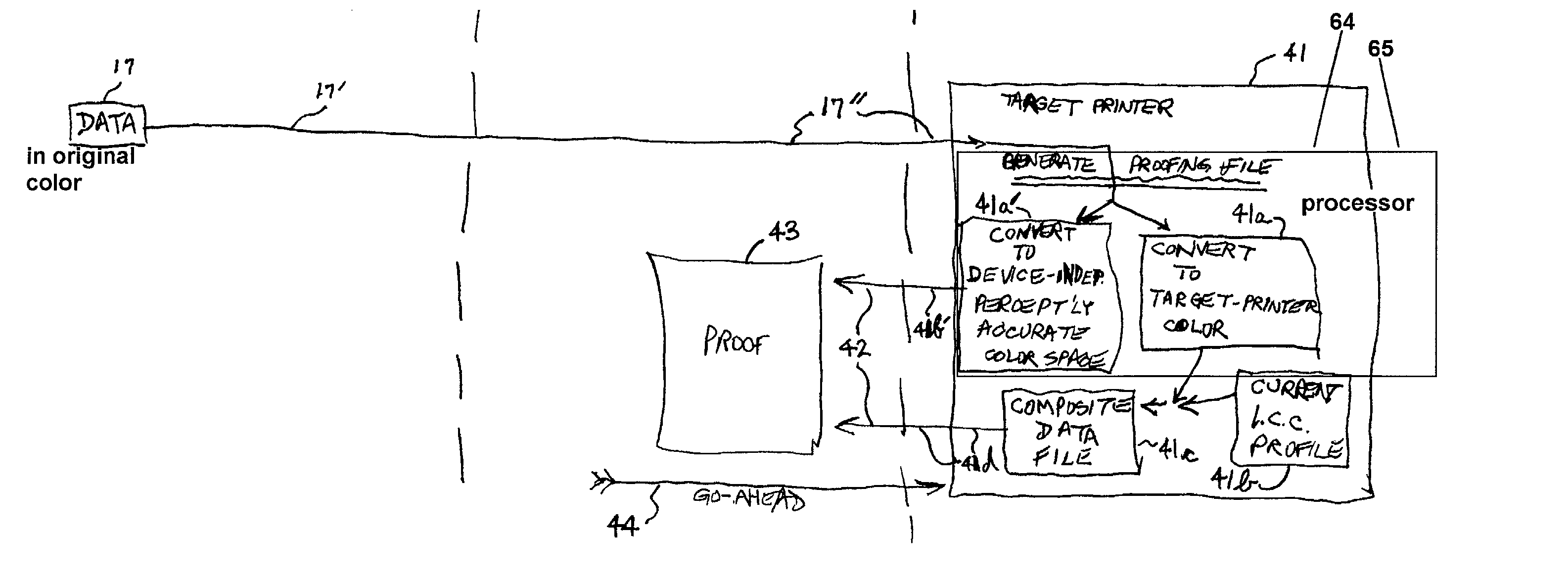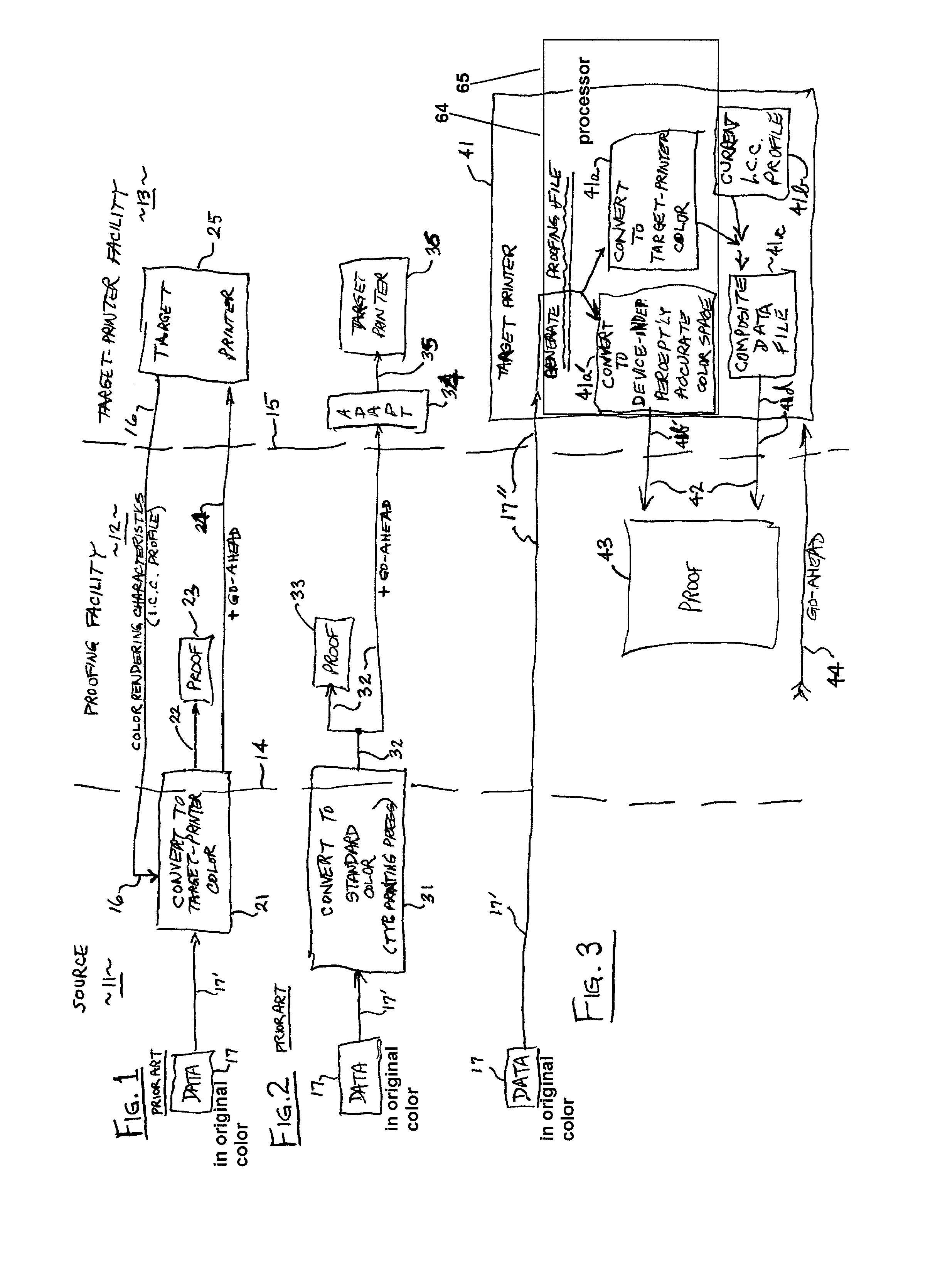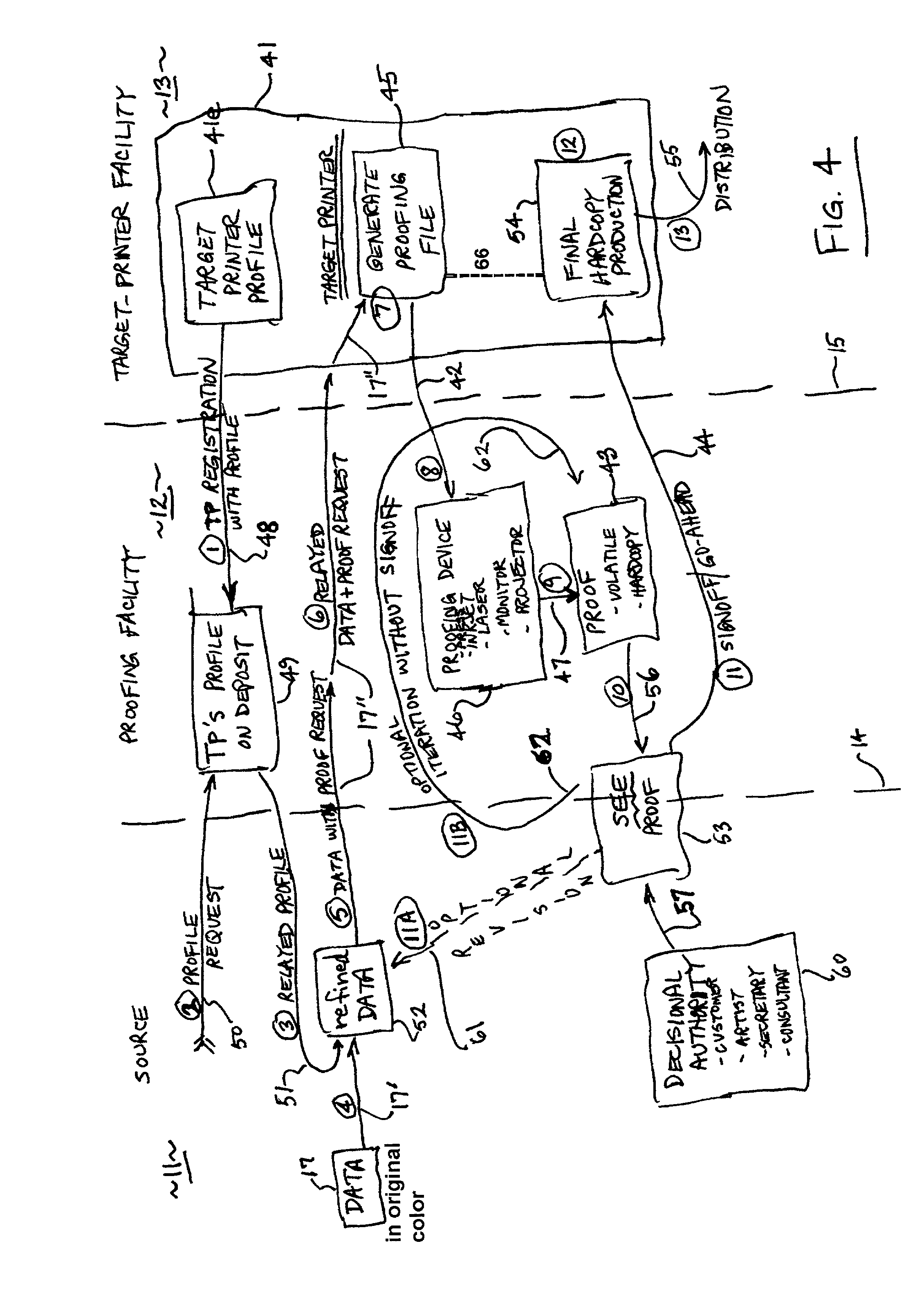Proofing data file generated by target printer facility
a technology of printer facility and proofing data, which is applied in the direction of printing, visual presentation, instruments, etc., can solve the problems of not ending unable to meet the requirements of printing, and not achieving the end of legal liabilities and other obligations, so as to reduce the possibility of mismatching understanding and stable raster files
- Summary
- Abstract
- Description
- Claims
- Application Information
AI Technical Summary
Benefits of technology
Problems solved by technology
Method used
Image
Examples
Embodiment Construction
1. RECAP OF CONVENTIONAL PROOFING INADEQUACIES
[0197] As a beginning of the printing process, the producer 11 of the content generates a document data file 17, which may include color information in any one of multiple formats --for instance RGB, CMYK or Pantone. Accompanying or incorporated into this file 17 are other printing specifications, enumerated earlier.
[0198] The overall end-objective is printing and delivery of a satisfactory hardcopy using a target printer 25. By trade practice, even though that printer may be operated in a facility 13 staffed by highly talented and responsible professionals, the question of what constitutes a "satisfactory" hardcopy is not for those staff members.
[0199] Rather that question is for, most typically, the customer or some other representative entity associated with the source 11. Herein lies the significance of the proof and of its formal acceptance or rejection.
[0200] In one conventional method of generating a proof, the producer 11 (FIG. 1...
PUM
 Login to View More
Login to View More Abstract
Description
Claims
Application Information
 Login to View More
Login to View More - Generate Ideas
- Intellectual Property
- Life Sciences
- Materials
- Tech Scout
- Unparalleled Data Quality
- Higher Quality Content
- 60% Fewer Hallucinations
Browse by: Latest US Patents, China's latest patents, Technical Efficacy Thesaurus, Application Domain, Technology Topic, Popular Technical Reports.
© 2025 PatSnap. All rights reserved.Legal|Privacy policy|Modern Slavery Act Transparency Statement|Sitemap|About US| Contact US: help@patsnap.com



